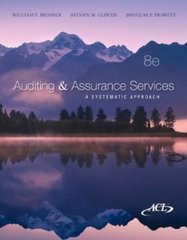Question
Casey currently commutes 35 miles to work in the city. He is considering a new assignment in the suburbs on the other side of the
Casey currently commutes 35 miles to work in the city. He is considering a new assignment in the suburbs on the other side of the city that would increase his commute considerably. He would like to accept the assignment, but he thinks it might require that he move to the other side of the city. Which of the following is a true statement?
Casey can deduct moving expenses if the distance between his current residence and his new assignment is at least 50 miles.
If Casey's move qualifies for the moving expense deduction, he can deduct the cost of meals while en route to his new residence.
To qualify for a moving expense deduction the new commute from Casey's current residence would need to be a minimum of 85 miles.
If Casey's move qualifies for the moving expense deduction, he can deduct half the cost of meals while en route to his new residence.
All of these are false.
(please explain)
Step by Step Solution
There are 3 Steps involved in it
Step: 1

Get Instant Access to Expert-Tailored Solutions
See step-by-step solutions with expert insights and AI powered tools for academic success
Step: 2

Step: 3

Ace Your Homework with AI
Get the answers you need in no time with our AI-driven, step-by-step assistance
Get Started


